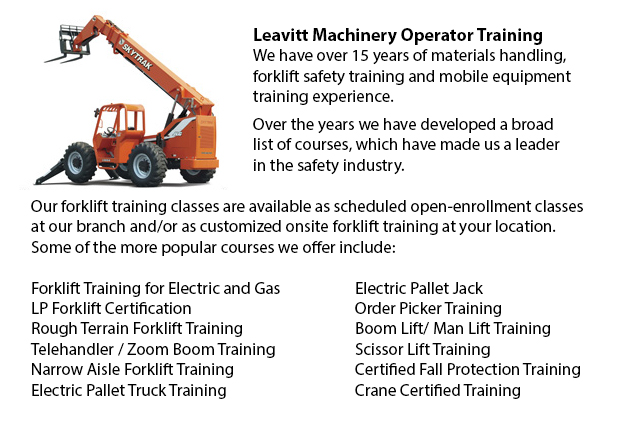
Telehandler License Kamloops - A telehandler or telescopic handler is a machine which is frequently utilized in agricultural and industrial applications. It has a similar appearance to a forklift and even works in a similar manner, though, the telehandler is more of a crane than a forklift. It has a telescopic boom which could extend upward and forwards from the motor vehicle. The boom has the capability to fit one of various attachments like muck grab, pallet forks, a bucket or a lift table.
The most common telehandler attachments are pallet blades. The telehandler is used so as to transport goods in situations where the loads cannot be moved by a standard lift truck. Telehandlers are especially helpful for placing loads on rooftops for example, or for removing palletized cargo from with a trailer. A lot of the jobs that a telehandler could complete will otherwise require a crane and this particular piece of equipment can be pricey, not always time efficient and impractical.
Because the boom extends or raises while bearing a load, it likewise acts as a lever. Even with the counterweights in the back, this causes the equipment to become ever more unbalanced; therefore, the advantage of the telehandler is actually its greatest limitation. As the working radius increases, the lifting capacity lessens. The working radius is defined as the distance between the center of the load and the front of the wheels.
For example, a telehandler with a 5000 lb capability with the boom retracted could safely lift as little as 400 lb once it is fully extended at a low boom angle. The equivalent machine which has a 5000 lb lift capacity and the boom retracted could support up to 10,000 lb with the boom raised to 70 degrees. The operator has a load chart to be able to help determine whether a specific lifting task could be done in an efficient and safe way. This particular chart takes into account the boom angle, the weight and height.
In order to monitor the telehandler, they come outfitted together with a computer that uses sensors. These sensors work to warn the operator, with some being able to cut controls to certain inputs if the limits of the vehicle are exceeded. Some telehandler types are also outfitted along with front outriggers which are known as mobile cranes. These significantly extend the lifting capacity of the apparatus while it is stationary.
-
Forklift Training Course Kamloops
Forklift Training Course Kamloops - CSA and OSHA establish criteria for forklift safety training that meets current standards and regulations. Anybody planning to use a forklift is needed to successfully complete safety training prior to utilizing an... More -
Forklift Training Program Kamloops
Forklift Training Program Kamloops - The forklift is a common powered industrial vehicle which is in wide use these days. They are occasionally called lift trucks, jitneys or hi los. A departments store will use the forklift in order to unload and lo... More -
Aerial Lift Training Kamloops
Aerial Lift Training Kamloops - The mechanized access platform known as an aerial work platform is a machinery which provides access to places that are otherwise inaccessible to people and other machine. Likewise called an elevating work platform or... More -
Forklift Training School Kamloops
Forklift Training School Kamloops - Forklift Training School - CSA and OSHA establish criteria for forklift safety training which meets existing standards and regulations. Anybody planning to use a forklift is needed to successfully complete safety t... More -
Heavy Equipment Training Courses Kamloops
Heavy Equipment Training Courses Kamloops - When choosing a heavy equipment operator course, the initial step must be to determine the capacity in which you would be working with heavy machines. You could find the correct course to teach you how to o... More -
Heavy Equipment Training School Kamloops
Heavy Equipment Training School Kamloops - HEO or also known as the heavy equipment operator courses would provide you with the skills and knowledge required in order to enter the workforce as an entry level heavy machine operator. In this 12 week co... More -
Telehandler Operator Training Kamloops
Telehandler Operator Training Kamloops - Telescopic handler Forklifts or telehandler forklifts are common industrial equipment found in numerous construction industry environment. The telehandler is a helpful machinery and makes for a valuable tool w... More -
Heavy Equipment Safety Training Kamloops
Heavy Equipment Safety Training Kamloops - A particularly important subject for those who work in industry environments is heavy equipment safety. This particular topic is relevant for individuals likewise who employ the use of heavy equipment to be... More

Forklift Training Kamloops
TOLL FREE: 1-888-254-6157
Kamloops, British Columbia
forklifttrainingkamloops.com
Email Us
About Us


